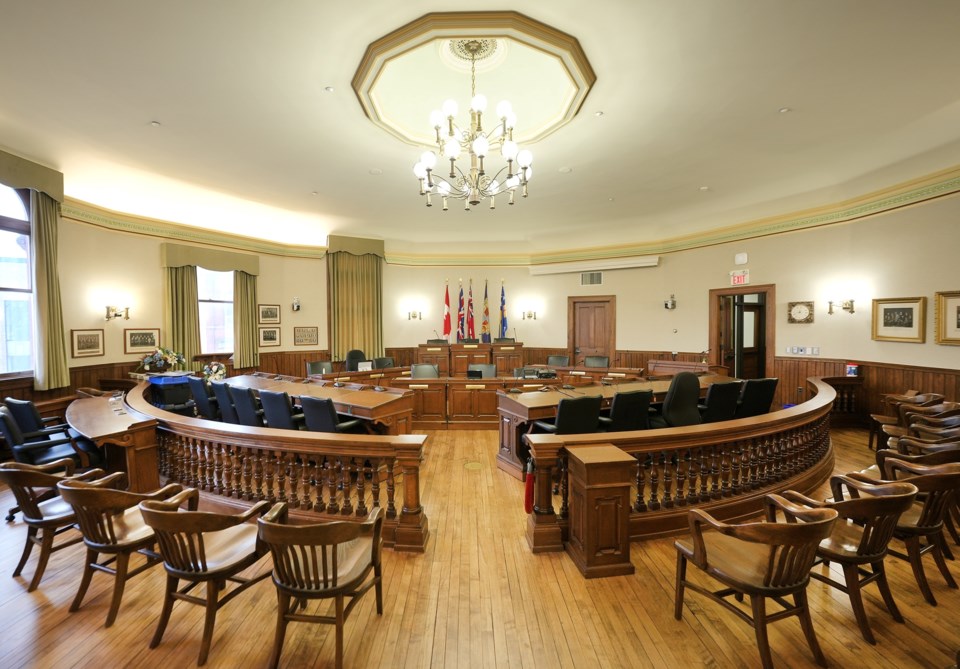This story was previously published on Stratford Today.
City council received a staff report that proposes, as part of the budget process, Stratford adopt a multi-year budget policy starting in 2025.
Karmen Krueger, Stratford’s director of corporate services, said there are both benefits and drawbacks to using a multi-year budget, starting with the ability to take a preliminary view into the near future based on current knowledge.
“Known contract increases can get captured, reductions in long-term debt, planned expenditures based on specific council priorities or plans that have been adopted can be shown,” she said, outlining the positives. “One of the drawbacks is that we don’t have a crystal ball to tell us what inflation might end up at, or things like expiring agreements that might have a different effect on the budget. The mathematical margin of error increases each year you go out in the multi-year period.”
If the city chooses to adopt a multi-year budget system, there would still be room for mid-course adjustments. Krueger said council only has the authority to sign off on a single year’s budget with the others in the plan being there for reference.
“Each year within a multi-year budget will require the same depth of analysis by staff before presenting a budget each year,” she said.
As part of the report, Stratford would use 2.5 per cent as their general inflation rate and Krueger said the multi-year model would still maintain flexibility to be re-evaluated each year in that regard.
“Ultimately, the 2.5 per cent only applies to areas where a better estimate is not available. Some types of expenses or revenues move very differently than a ‘basket of household goods’ which is how the consumer price index is described,” she said. “We are not quite yet at the point where we can say that inflation of 2.5 per cent would be used in every year of the forecast, nor that every line item is affected this simply. We could theoretically make the inflationary assumption for 2026 and beyond something less than that, or more than that, but there will still be several areas that this would not apply to, such as long-term debt payments or insurance. These we can estimate differently based on what we know today.”
She added that the years 2026 and beyond are placeholder projections, based on projects, plans and commitments Stratford currently has, and it’s not the intent to over or under inflate the revenue and expense estimates or include things they don’t know yet - it’s simply to provide a tool to show that inflation is being accounted for and that decisions made by council now have a ripple effect.
There was some discussion at Monday’s meeting about the lack of hard targets in a multi-year budget, and Krueger explained that with hard targets there is sometimes the sense that staff has to make excessive cuts as a result.
“In this day and age with all of the pressures on reducing funding and increasing costs, there is no padding to cut. There are really no budget lines that contain significant contingencies,” she said. “Providing a hard target gives an impression that staff have control to reduce costs without affecting services, but that is not the case when there is no ‘padding’. Back 10-20 years ago, when municipalities received a larger percentage of their funding from the provincial and federal governments, this might have been the case. But as those funding streams have diminished, the trimming from expenditures has had to happen to correspond with those cuts. Taking an approach of saying, ‘this is the cost to deliver the service level that has been established through council approvals’ forces the conversation of ‘what services does the City have to provide, versus what services does the City want.’ Invariably, in my experience, reducing programs or services is unpalatable, and adding or increasing is the conversation that emerges.”
The report also indicated that council would provide direction regarding any changes to the budget survey and public engagement format preference. In the recent past, Krueger said open houses and public gatherings were eliminated due to pandemic protocols and that put a heavier reliance on surveys, website communications and other similar tools. While open houses have yet to return - in part because they are historically not well attended – there are other similar options that remain on the table.
“The ‘Chat with the Treasurer’ session was created for the 2024 budget to try a more casual format for those people who had questions but weren’t comfortable coming to a big open house,” Kruger said. “It had 5-6 attendees and turned more into a fireside chat forum. Regarding the surveys, the number of responses fluctuates but is typically around 100. For the 2024 budget, there were 98 surveys completed, and 2023’s budget survey had 177.”
She said that the Engage Stratford website with posted budget information drew more attention, with 500 people getting information on 2024’s budget and nearly 700 the year before.
Council voted to accept the report in a recorded 8-2 vote, with councillors Cody Sebben and Geza Wardorfa voting against.




